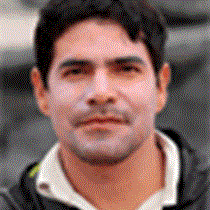Urbina Bay and Tagus Cove, Isabela Island
Isabela is the largest of the 17 islands forming the archipelago of Galápagos. If you see it on a map it looks like a sea horse formed by six volcanos, some of them active. To be at the foot of the majestic shield volcano called Alcedo is very impressive, even more knowing that the place we are going to be walking today is an uplifted area – this event occurred in 1954, when at least 2.5 miles of the west coast of Isabela at Urbina Bay came up above sea level, adding land to this place and giving all these creatures no time to run away. Now you can see big pieces of white coral everywhere, and shells, remains of sea urchins and sand dollars buried under the new soil covered by endemic vegetation that took over this spot so quickly in the last 58 years. Yes, that is awesome; to walk on a land that was part of the seabed.
After having breakfast we landed at Urbina Bay, the breaking waves on the black beach wet our feet, after putting on our shoes we walked inland. The Darwin finches were very active, eating seeds and insects everywhere, yellow warblers were fighting for territory, mockingbirds were singing in the bushes, and tons of hermit crabs were walking along the trail. The fierce sun made the land iguanas move out of their holes to warm up. We were lucky: the vegetation was exuberant and suddenly we spotted some giant tortoises, this prehistoric reptile that is the emblem of the islands. “This was a great morning,” one of our adventurous travelers exclaimed after our exploration in this unique place, and after cooling off in the refreshing waters. We left this place with its quietness, its solitude, having great memories in our minds.
Back on board of the National Geographic Endeavour, we enjoyed our lunch, and then our photo instructor, Walter Perez, was ready to answer questions from our avid photographers who wanted to improve their skills to take good photos of the Galápagos wildness.
In the afternoon we arrived at Tagus Cove, a place where pirates came about 300 hundred years ago to rest, repair their boats, get fresh water, and to capture some giant tortoise for food. The human history of Galápagos is very rich here.
Kayakers were ready for more adventure along the coast with plenty of seabirds such as penguins, blue-footed boobies, pelicans, brown noddies, flightless cormorants and gulls. Snorkelers were also ready to explore the marine ecosystem; they were very happy because a few minutes before jumping in the water they saw many marine turtles and penguins swimming! After coming out of the water they commented how excellent the experience was, maybe the highlight of their trip.
Later some travelers took a walk up to one of the tuff volcanos where Darwin Lake is, while we motored along the shoreline looking for more wildlife. It was a busy day – beautiful and astonishing.




